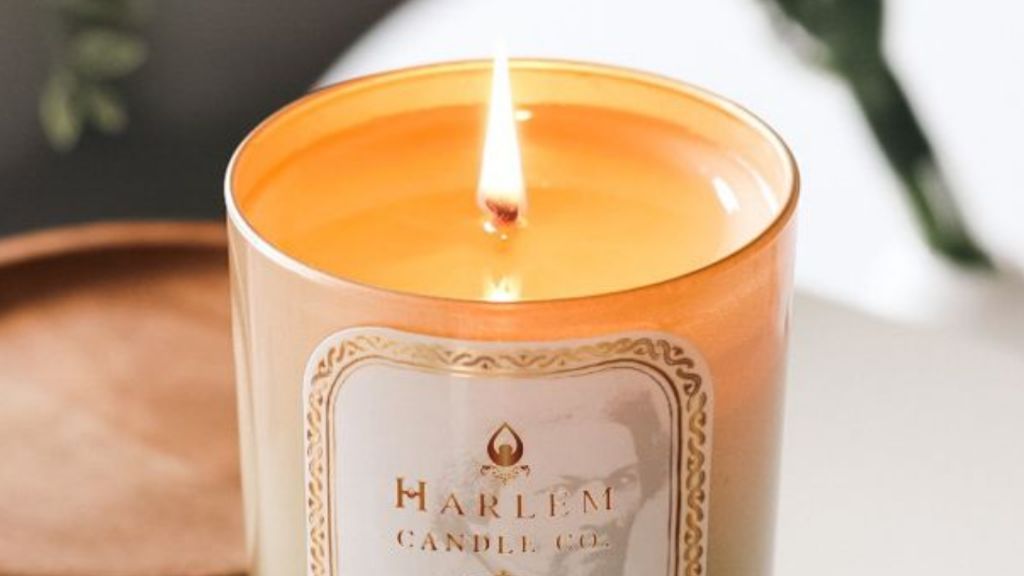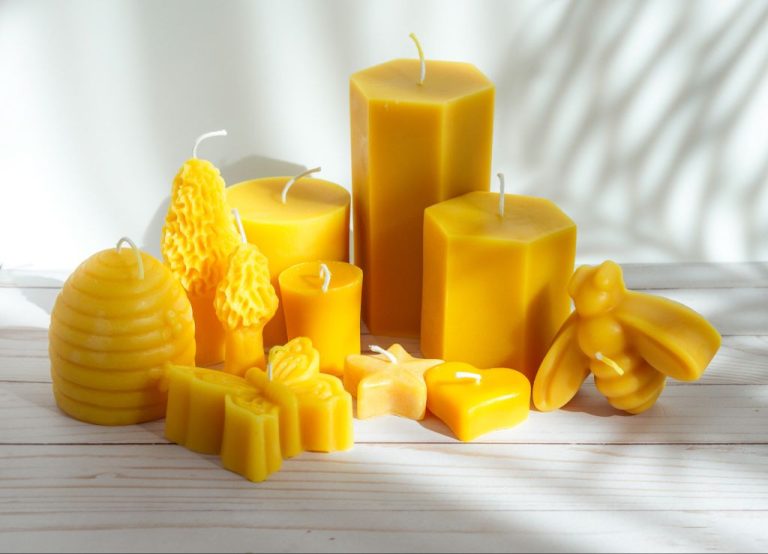Are Soy Candles Low Temperature?
Introducing Soy Candles
Soy candles are made from soy wax, a vegetable-based wax produced from soybean oil. Unlike paraffin wax which is a petroleum byproduct, soy wax is a renewable and sustainable resource (CandleScience).
To make soy wax, soybean oil goes through a process called hydrogenation where hydrogen is added to the oil’s fatty acids. This strengthens the oil and turns it into a solid wax. The soy wax is then blended with fragrance oils and other ingredients to create soy candles (Wikipedia).
The soybean-based wax has a lower melting point than paraffin wax, so soy candles burn cooler and slower. The wax also holds fragrance oils better than paraffin, producing stronger scents when burning (The Candle Studio). Soy wax is also biodegradable and produces less soot.
Burning Temperature of Soy Candles
Soy candles typically have a lower burning temperature compared to candles made from paraffin wax or beeswax. The melting point of soy wax is around 115 to 135 degrees Fahrenheit, while paraffin wax melts at 130 to 150 degrees Fahrenheit (source: https://lonestarcandlesupply.com/soy-vs-paraffin/). Beeswax has an even higher melting point around 143 to 170 degrees Fahrenheit.
The reason soy wax melts at a lower temperature is because of its molecular composition. Soy wax is made from hydrogenated soybean oil, which contains fatty acids. These fatty acids have a lower melting point compared to the hydrocarbons in paraffin wax derived from petroleum. The natural structure of soy wax requires less energy for the solid wax to transition into a molten state (source: https://www.slatkinandco.com/blogs/the-slatkin-summary/soy-wax-vs-paraffin-wax-which-is-better).
Benefits of Lower Burn Temperatures
One of the key advantages of soy candles is that they burn at lower temperatures compared to paraffin wax candles. Soy wax melts at a temperature between 135 to 145 degrees Fahrenheit, while paraffin wax melts at temperatures between 150 to 180 degrees Fahrenheit.
The lower melting point of soy wax offers a few notable benefits:
- Reduced risk of fire – With their lower burn temperature, soy candles are less likely to start accidental fires if placed near flammable objects. The lower heat makes them safer to burn around kids and pets too.
- Less soot – Paraffin wax produces more soot as it burns, leaving black residue on walls and surfaces. Soy wax’s cleaner burn prevents sooty buildup.
- Better scent throw – Fragrances and essential oils evaporate more readily at higher temperatures. The lower melt point allows soy candle scents to fully develop without burning off too quickly.
Sources:
https://www.vincentlandcandleco.com/blogs/news/the-benefits-of-coconut-soy-wax-candles
https://716candleco.com/advantages-of-soy-candles/
Ideal Burning Temperature
When it comes to soy candles, there is an ideal burning temperature range that allows the wax to melt evenly and the fragrance to be released properly. According to research, the ideal burning temperature for soy candles falls between 120-140°F (49-60°C).[1] Burning soy candles within this temperature range helps maximize scent throw as the wax melts at the proper rate to release fragrance.

Testing different wick types and sizes for your specific soy candle vessel is important to achieve an optimal flame size and the recommended burn temperature. Most manufacturers recommend using cotton or paper cored wicks for soy candles, in sizes that correspond to the diameter of the candle vessel. Larger candles require larger wick sizes to allow for a bigger melt pool. Adjusting wick height as the candle burns down also helps maintain the ideal temperature over the candle’s lifetime.[2]
Using a thermometer, you can test the temperature of the melted wax pool as the candle burns to ensure it stays within the target range of 120-140°F. Finding the right wick and properly trimming it results in a soy candle that burns at the perfect temperature to maximize scent throw and burn time.
Safety Considerations
When burning soy candles, it is crucial to follow basic safety precautions to prevent fires, injuries, and other hazards.
Always use an appropriate, non-flammable candle holder. Glass, metal, or ceramic holders designed for candles are ideal. Avoid putting candles directly on surfaces like wood that could catch fire if the wax melts and drips (Tipsycandlecompany.com, 2022). The holder should be large enough to catch all melting wax to prevent it from spilling over.
Allow adequate burn time for the soy wax to form an even melt pool. When lighting a soy candle for the first time, let it burn for at least 2-3 hours to allow the wax to melt from edge to edge. This will help prevent tunneling where the center of the candle doesn’t melt properly (Unplugsoycandles.com, 2022).
Never leave a burning candle unattended. Extinguish the flame if you need to leave the room. Trim wicks to 1⁄4 inch before lighting to prevent excessive smoking and wild flames. Don’t burn soy candles near flammable items or in drafty areas where they could easily be knocked over.
Taking basic precautions allows you to safely enjoy soy candles and their cozy ambiance.
Maximizing Scent Throw
One of the key benefits of soy candles is their excellent scent throw. Scent throw refers to how well a candle’s fragrance oils are dispersed into the surrounding air when burned. There are a few simple tips for maximizing scent throw with soy candles:
Allow the wax pool to fully form before extinguishing the candle. According to CandleScience, letting the melted wax reach the edges of the container before blowing it out allows for an ideal temperature to volatize more fragrance oil. A full melt pool helps disperse more fragrance into the air.1
Trim wicks to the proper height, generally around 1/4 inch. Wicks that are too short or too long can negatively impact scent throw. Keeping wicks trimmed prevents sooting and allows for the ideal burn temperature to maximize fragrance dispersion.2
Caring for Soy Candles
Proper care is important for maximizing the life and performance of soy candles. An important tip is to always allow the candle to cool and harden before moving it. According to Candle Care | Soy Candle Burning Instructions, you should allow the wax pool to harden for at least 2 hours before moving the candle. Attempting to move a candle before it has adequately cooled and solidified can disrupt the wax pool and lead to issues like tunneling.
You’ll also want to be mindful of how you store a soy candle when it’s not in use. According to How To Care Your Soy Candle, soy candles should be stored in a cool, dry place when not being burned. Exposure to light, heat, or humidity can negatively impact scent throw and lead to other problems. Storing candles properly when not in use will help preserve fragrance and maximize burn time.
Troubleshooting Common Issues
Soy candles are generally easy to make, but occasionally issues can arise that affect the look, scent, or burn of the candle. Three common problems are sooting wicks, weak scent throw, and tunneling.
Sooting wicks occur when the wick is too large for the wax pool, generating excess soot that clogs the wick [1]. To prevent sooting, use a smaller wick or double-wick to distribute heat. Trim wicks to 1⁄4” before lighting, and trim again during burning to remove any soot buildup.
Weak scent throw can result from not adding enough fragrance oil, or from high temperatures causing fragrance volatilization [2]. Use 6-8% fragrance oil by weight, and pour candles at 115-135°F to maximize scent retention.
Tunneling happens when the wax pool melts unevenly, creating channels [3]. To prevent tunneling, maintain a wax pool temperature of 120-140°F. Trim wicks before each burn, and rotate candles periodically while burning.
Soy Candle Accessories
Soy candles can benefit from a few handy accessories that enhance the candle experience. Popular accessories include:
Wick trimmers – These allow you to neatly trim your candle wick before lighting to help the wick burn cleaner and more evenly. Trimming the wick helps prevent smoking, tunneling, and mushrooming.
Candle trays or plates – Candle trays not only provide an attractive, decorative holder for pillar or container candles, but they also catch melting wax to protect your surfaces.
Candle snuffers – Snuffers safely extinguish a candle flame. They’re useful for blowing out candles that are in hard to reach spots or too hot to blow out yourself.
Other popular accessories include candle lighters, jar toppers, and candle warmers. When paired with high quality soy candles, accessories can enhance fragrance throw and customize the candle experience.
Conclusion
In conclusion, soy candles offer several benefits over traditional paraffin wax candles. Soy wax has a lower melting point, allowing soy candles to burn cooler and slower. This helps maximize scent throw and prevents burning or sooting issues. Soy wax is also made from a renewable resource, as opposed to paraffin which is made from petroleum. Soy candles are better for the environment and considered non-toxic. The slower burning temperature of soy wax makes soy candles safer to burn around pets and children.
The major benefits of soy candles include:
- Lower melting point than paraffin for slower, cooler burning
- Maximizes scent throw
- Prevents burning or sooting issues
- Made from a renewable, environmentally-friendly resource
- Considered non-toxic and safer to burn around pets and children
While paraffin candles may be cheaper initially, soy candles offer many advantages in terms of safety, scent, and sustainability. For candle lovers looking for an eco-friendly, clean-burning option, soy wax candles are an excellent choice.





